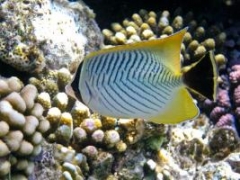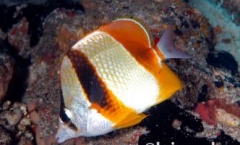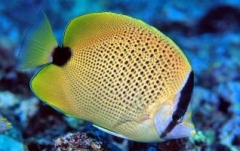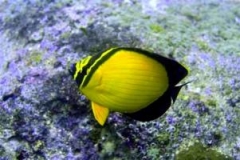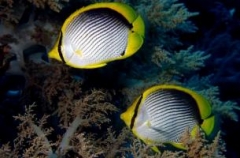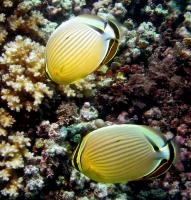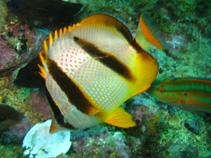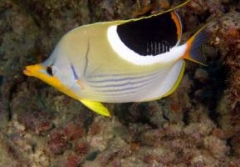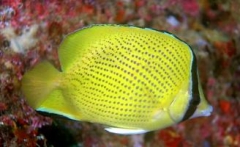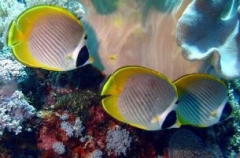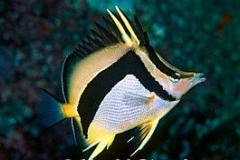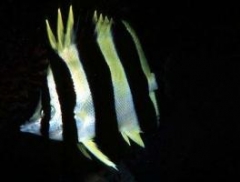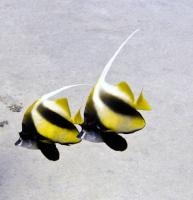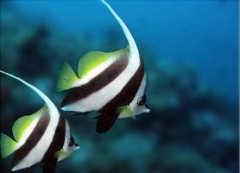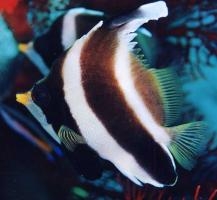-
Posts
16,553 -
Joined
-
Last visited
-
Days Won
29
Content Type
Profiles
Forums
Gallery
Everything posted by yikai
-
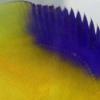
OMG! Look at these hybrids and rare fishes!
yikai replied to Digiman's topic in FOWLR (Fish-only with Live-rock)
personatus is also quite deep bodies compared to the rest. gives it a more musculine appearance compared to the other streamlined genicanthus. the colours are phenomenal especially the male. i would love for sentosa to acquire a pair of personatus and group of smithi. btw do you know anything about cirrhilabrus claire? from what i know, C. claire is endemic to rarotonga @ cook islands. there's only 1 holotype photo of it and even my big book of wrasses by kuiter does not have any photo, let alone info on it. it just states .. Cirrhilabrus claire -- (N/A). -
time to promote one of the hobby's very misunderstood and poorly known fish. Forcipiger flavissimus, the long nose butterflyfish. It pains me to know that so many reefers are put off by this fish because of it's frilly and seemingly delicate appearance. Truth is, this is as easy as any butterflyfish can get. A healthy individual will begin feeding almost immediately after shipping. by almost immediately i mean few hours to 1-2 days max. Feeding is no issue, it is very easy. As for hardiness, this is about as hardy as most butterflyfishes will get. Disease resistance is fair to say the least. Butterflies are notorious for their extremely poor tolerance for disease. The longnose butterflyfish on the other hand is opposite. Although still easily proned to ich, they tolerate it pretty well and build resistance very quickly as compared to their delicate cousins. the most important question is probably if they are reef safe or not. This is about as reefsafe as any butterflyfish can get. their tiny pincer like mouth makes it impossible to eat SPS polyps. As for LPS and softies, they rarely if ever, take a bite. You would probably stand a higher chance witnessing a blue tang eating your LPS than this happening. The sister species, Forcipiger longirostris, is 100% reefsafe. It looks almost identical to the longnose except for having an even longer nose, about 0.5x longer. this makes it impossible to eat any coral polyp. However due to the even tinier mouth, feeding is difficult and thus, not as hardy as the regular longnose butterfly. It pains me to see these beautiful fish being left to die at most LFS. Their skinny profile and tiny mouths means that they require at least 2-3 feedings a day of small meaty foods like mysis and chopped seafood to keep their weight up. Something that most LFS cannot commit to, and thus, these fishes often waste away. Some specimens are known to take aiptasia, but not with as much gusto as their loser counterpart, the copperband butterflyfish, which hardly thrives when compared to these. Longnose butterflyfishes are beautiful yellow an black, with gorgeous dorsal spines to enhance those killer features. it's a beautiful fish and i would choose this over a boring yellow tang ANY day. plus, they require less space than an active tang and often like swimming upside down under rocks and caves, which adds so much character. If so many people are willing to try copperbands which are 50x harder than this, i don't see why people should not give the beautiful longnose butterflyfish a try. Convinced? The next time you are looking for a yellow fish to brighten up your tank, don't hesistate to consider the longnose butterflyfish. Don't be put off by their "delicate" appearance. they are just the opposite.
-
my 2 baby pocci frags. green one cropped out accidently on the right and the bluish greenish one in the middle.
-

OMG! Look at these hybrids and rare fishes!
yikai replied to Digiman's topic in FOWLR (Fish-only with Live-rock)
-

OMG! Look at these hybrids and rare fishes!
yikai replied to Digiman's topic in FOWLR (Fish-only with Live-rock)
auripes very abundant in their country but super rare to us. and i would love to own one if not for their extreme non-reef safe qualities. LOL. the americans are so lucky. yes i saw that thread too re the G. personatus. -
-

OMG! Look at these hybrids and rare fishes!
yikai replied to Digiman's topic in FOWLR (Fish-only with Live-rock)
john coppolino in the waikiki aquarium. you can see the background there's the super rare ultra beautiful smith butterflyfish!! the only place in the world that has the Smith butterfly on display. my dream fish. photo by john. c -
-
-
-
-
-
-
-
-
-

OMG! Look at these hybrids and rare fishes!
yikai replied to Digiman's topic in FOWLR (Fish-only with Live-rock)
same as borbonius anthias. anyway the auripes butterfly has a very limited distribution in the world. only found in Japan and taiwan. both of these countries sell these fishes in their LFS and very rarely are they found anywhere else in the world. so quite surprised to see them being sold for food. maybe it's really very delicious lol.. -

OMG! Look at these hybrids and rare fishes!
yikai replied to Digiman's topic in FOWLR (Fish-only with Live-rock)
yet another one caught on a hook. what's wrong with these people. is this fish really that delicious? -

OMG! Look at these hybrids and rare fishes!
yikai replied to Digiman's topic in FOWLR (Fish-only with Live-rock)
-
they are not cloves.. these grow on stems like xenia and are not individual polyps like cloves. these are sympodium it's related to xenia but in a different genus. same family though.
-
Common name : Scythe butterfly fish Max length : 16 cm Distribution : Pacific ocean Captive care : This deep water butterflyfish is rarely seen in the aquarium trade. This is unfortunate, because it is a relatively hardy member of the family. They may quarrel with one another, so only one should be kept in the tank. It prefers cooler water so a chiller is a need. Aquarium size: 75 gal Temp: 16 - 20 degree
© www.sgreefclub.com
-
-
-
-







